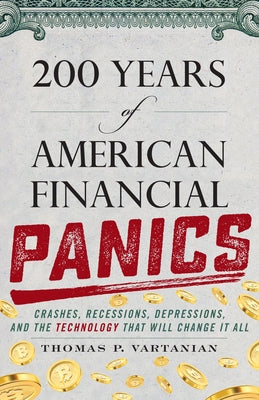From 1819 to COVID-19, 200 Years of American Financial Panics offers a comprehensive historical account of financial panics in America. Through a meticulous dissection of historical events and the benefit of his experience handling many of the country's largest bank failures, Thomas P. Vartanian reveals why so many more devastating financial crises have occurred in America than nearly every other country in the world. Vartanian provides extensive evidence of how the collision of policy-driven government actions and profit-oriented business performance have disrupted market equilibrium and made the U.S. system of financial oversight less effective and more susceptible to missing the signs of future financial crises, including policies that: -imposed tariffs and chartered dozens of poorly regulated, uncapitalized state banks that facilitated panics in the 19th century; -created ambivalence over whether gold, silver or paper money should be the preeminent form of payment, creating the perfect conditions for the depression of 1893; -kept interest rates low to assist the central banks in England, Germany and France, allowing an overheated U.S. stock market to shift into overdrive and crash in 1929; -planted the seeds of the S&L crisis more than twenty years before when Congress imposed artificial limits on deposit interest rates and the states capped mortgage interest rates to increase homeownership; pressured banks in the 1990's to increase mortgage lending to increase home ownership while the Fed engaged in loose monetary policies, adding fuel to the greatest economic crisis since the Great Depression. 200 Years of American Financial Panics dissects financial crises in a way not attempted before, concluding that the pyramid of governmental oversight intended to foster economic safety and stability has been turned on its head to its detriment. Vartanian provides readers with a unique list of practical solutions. Most importantly, his analysis of financial technology, from artificial intelligence and Big Data to cryptocurrencies and quantum computing, forecasts how financial markets and government regulation will change. 200 Years of American Financial Panics is a must read for anyone that wants to understand their money, financial markets, and how they are going to change in the future.
Author: Thomas P. VartanianPublisher: Prometheus Books
Published: 05/15/2021
Pages: 460
Binding Type: Hardcover
Weight: 1.80lbs
Size: 9.10h x 6.00w x 1.70d
ISBN13: 9781633886704
ISBN10: 1633886700
BISAC Categories:-
Business & Economics |
Economic History-
History |
United States | General-
Political Science |
Public Policy | Economic PolicyAbout the Author
Thomas P. Vartanian has been involved in US financial services since 1976. Throughout his career, he has represented parties in 30 of the 50 largest bank and S&L failures in the country. He served in the Reagan administration as General Counsel of the Federal Home Loan Bank Board and the Federal Savings and Loan Insurance Corporation during the S&L Crisis, and before that as Special Assistant to the chief counsel at the Office of the Comptroller of the Currency in the Carter administration. He was the Chair of the American Bar Association's Cyberspace Law Committee between 1998 and 2002. Between 1983 and 2018, Vartanian chaired the financial institution's practices at the international law firms of Dechert LLP and Fried Frank LLP. After retiring from the practice of law, he became the Executive Director of the Program on Financial Regulation and Technology at George Mason University's Scalia Law School, where he was also a Professor of Law. He has been an adjunct professor teaching banking and financial technology law at Georgetown, George Washington, and Boston University law schools and has guest-lectured at Harvard Law School. His articles have appeared in numerous publications around the world, including the Wall Street Journal, The Hill, The Washington Times, and American Banker.

